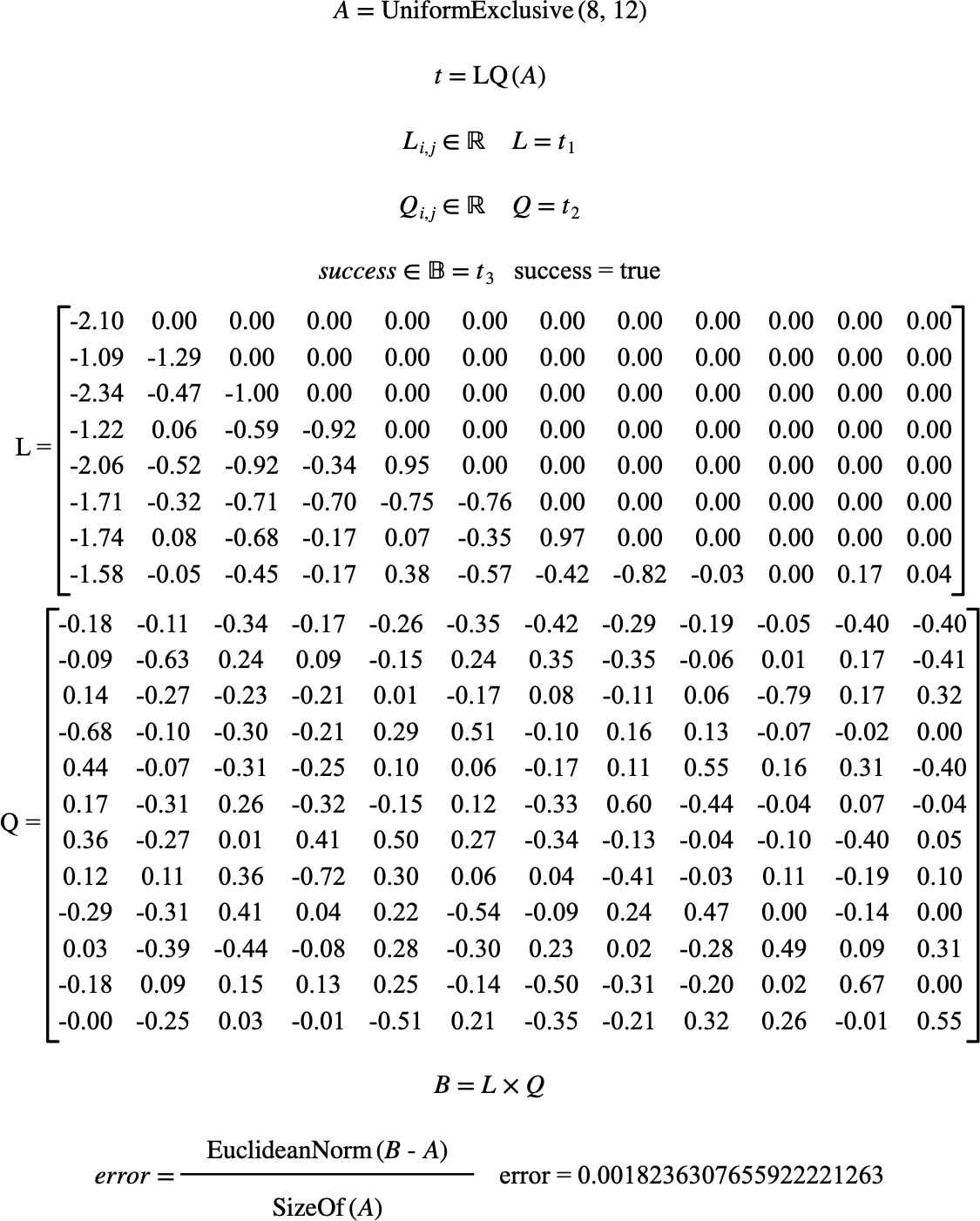\(\text{LQ}\)¶
You can use the \(\text{LQ}\) function to perform an LQ decomposition of a real or complex matrix, creating the \(L\) lower triangular matrix and a \(Q\) unitary matrix.
You can use the \lq backslash command to insert this function.
The following variants of this function are available:
\(\text{tuple } \text{LQ} \left ( \text{<matrix>} \right )\)
The \(\text{<matrix>}\) is a real or complex matrix. Boolean and integer matrices are automatically upcast to real matrices.
The function returns a tuple containing:
The \(L\) lower triagular matrix.
The \(Q\) unitary matrix.
A boolean flag indicating success (
true) or (false).
Figure 178 shows the basic use of the \(\text{LQ}\) function.

Figure 178 Example Use Of The LQ Function¶
